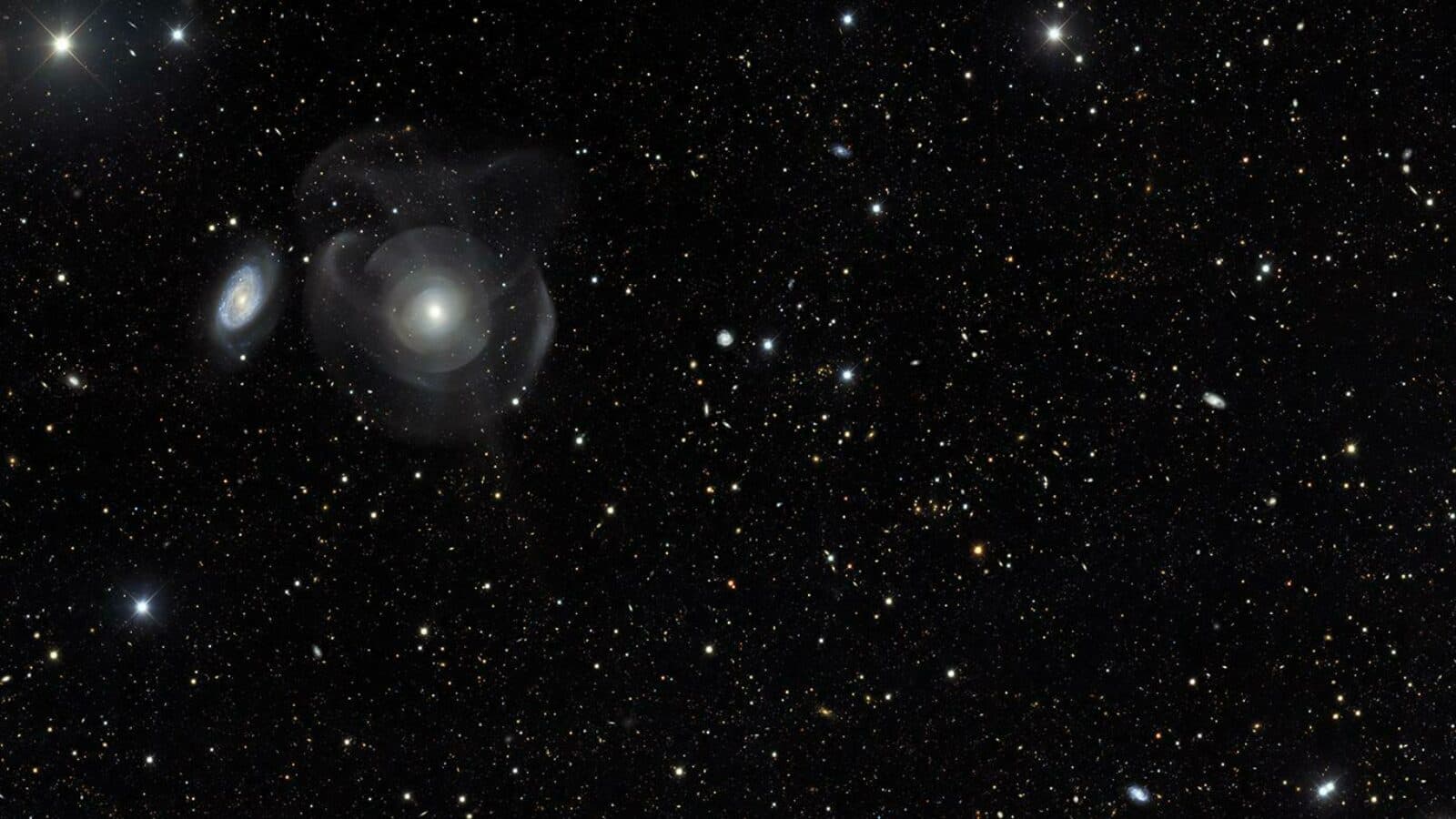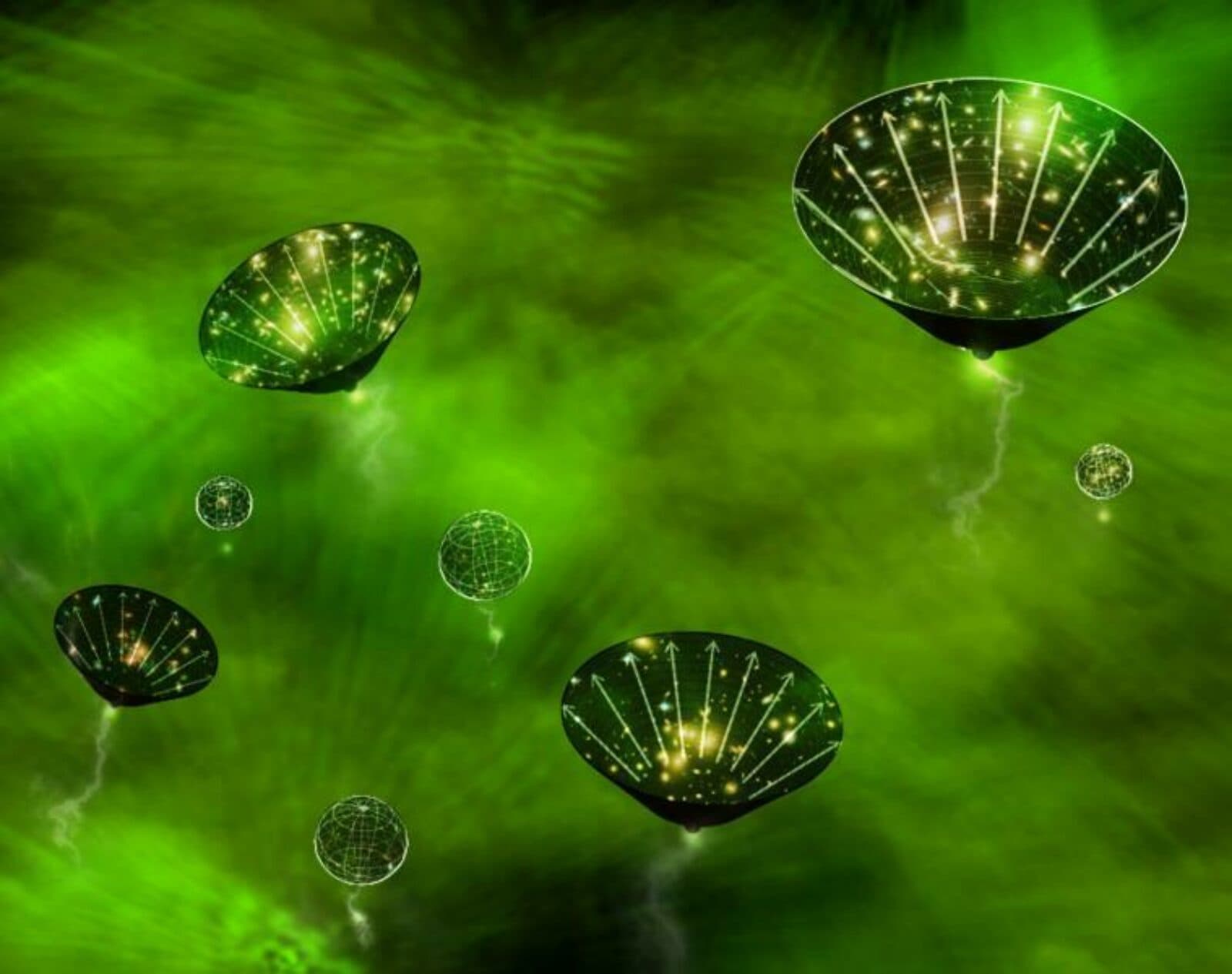Why Light is the Light Fantastic
by Adam Hadhazy
Far from a one-trick pony, light can be innovatively harnessed in its myriad forms and conveyances to reveal the integrated facets of reality

The Author
With the winter solstice ever farther in the rearview and the days growing perceptibly longer in the Northern Hemisphere, let's take a moment to give light its due. When we say "light," we normally think of and mean the light that human eyes can see, and that the Sun and artificial lighting produce in welcome abundance. As we all learned in grade school science classes, though, this light is but a mere sliver of the electromagnetic spectrum—the band of energies that the particles composing light, called photons, can possess. At the lower-energy end of this spectrum, light isn't called light anymore, but is referred to as "waves" in the form of radio waves. At the opposite, highest-energy end, light gets rebranded as "rays," as in "gamma rays." The detection of these various guises of light is at the heart of astronomy and astrophysics which, until the 20th century, had been observationally an entirely visible light-based scientific discipline. Nowadays, the range of techniques and tricks researchers employ to wrest as much information as possible out of and ferried by light is vast. As findings this past month from Kavli-affiliated researchers indicate, the straight-ahead approach of registering photons streaming from objects, such as stars and heated gases within galaxies, is as important as ever. Also handy, though, is registering skews in the steady stream of light from objects caused by gravity herding photons into over- and under-dense bunches. Yet another approach: looking for specific kinds of light that other particles—confirmed and hypothetical alike—produce in their interactions with fellow constituent particles and fields of the universe. The list goes on, from reading off the "fingerprints" left by chemical elements in absorbed or emitted light, to the stretching out of light that speaks to the expansion of the universe itself. So as the Sun graces Earth's Northern Hemisphere with more and more of its photons these coming months, take a moment to appreciate all that astronomers and astrophysicist are able to do with the stuff—and all that we're learning as a species about the reality we are a part of in the process.
Students capture a fascinating galactic specimen
Undergraduate students pursuing the recently added astrophysics major at the University of Chicago and led by members of Kavli Institute for Cosmological Physics (KICP) have discovered a surprisingly mature galaxy in the early universe. The students had formed a research collaboration dubbed COOL-LAMPS, a clever construction standing for "ChicagO Optically selected strong Lenses - Located At the Margins of Public Surveys." As the collab's name suggests, its members combed over publicly available telescope imaging datasets, happening upon the intriguing galaxy. Although existing at a time when the universe was only 1.2 billion years old and where many galaxies were in fledgling states, the precocious galaxy in question had already formed a Milky Way's-worth of stars. It's one more piece of the puzzle as researchers continue to try and piece together the evolution of galaxies in the cosmos' earliest eons.
The earliest quasar ever glimpsed
A recent study announced a new recordholder for the earliest quasar ever seen in the universe. Quasars are the ultra-luminous cores of galaxies where supermassive black holes energetically devour matter. Stats-wise, the monster black hole has a mass of about 1.6 billion Suns, and the galaxy it's located in was observed in an era about 670 million years after the Big Bang. Astrophysicists are keen to learn about the rise of supermassive black holes and galaxies, along with the link they share of the former always being found within the cores of the latter. Researchers at the Kavli Institute for Astronomy and Astrophysics (KIAA) at Peking University and the Massachusetts Institute of Technology’s Kavli Institute for Astrophysics and Space Research (MKI) contributed to the discovery.
Stonkingly large new cosmic catalog released
The Dark Energy Survey, a project led by members of KICP and including researchers at the Kavli Institute for Particle Astrophysics and Cosmology (KIPAC) at Stanford University, has released a massive catalog of nearly 700 million astronomical objects. The publicly available catalog will help astrophysicists and cosmologists better gauge the amount of matter in the universe as well as its relationship to dark matter, an enigmatic substance thought to outnumber normal matter five times over. Countless other sorts of investigations will be enabled by this huge cosmic database, such as studies of pulsating stars, black hole mergers, and the dwarf satellite galaxies of our Milky Way.
A novel way to discover primordial black holes
The early universe could have spawned in abundance what are known as primordial black holes, even before the first stars ignited. These primordial black holes could account for some of the mysterious dark matter in our universe. More provocatively, these black holes could harbor entire "baby" universes of their own, hidden to us but representing complete cosmoses to any beings inside them. A new paper by researchers at the Kavli Institute for the Physics and Mathematics of the Universe (Kavli IPMU) at the University of Tokyo has proposed using the Hyper Suprime Cam (HSC), an instrument installed at the Subaru Telescope in Hawaii, to look for these intriguing relics from our universe's early days. HSC has the unique ability to image the entire Andromeda Galaxy and its hundreds of millions of stars every few minutes. If a primordial black hole were to cross between us and the Andromeda Galaxy, the black hole's powerful gravity would distort Andromedan starlight in a measurable, distinctive manner. With this theoretical basis in place, the goal now is to gather up and peruse the necessary observations to track down some truly bizarre objects.

On the hunt for star-spawned axions
An innovative search by MKI researchers for dark matter candidate particles called axions streaming from the star Betelgeuse has come up empty. Axions are hypothetical particles with vanishingly small masses that might be produced when ordinary particles of light, called photons, encounter extreme magnetic fields—for instance, the fields generated in the cores of stars on the brink of going supernova. Betelgeuse, a red giant star in the constellation Orion that evidence suggests will explode in the next several hundred thousand years, is the closest such on-the-edge star to Earth. Should those axions indeed form, they'd convert back into photons in the x-ray spectrum range upon encountering other magnetic fields between Betelgeuse and Earth. Researchers accordingly looked toward Betelgeuse with the x-ray-sensing NuSTAR space telescope. While no telltale x-rays turned up, the negative result will help constrain future searches for axions.